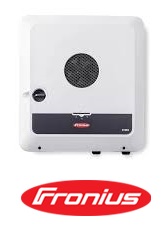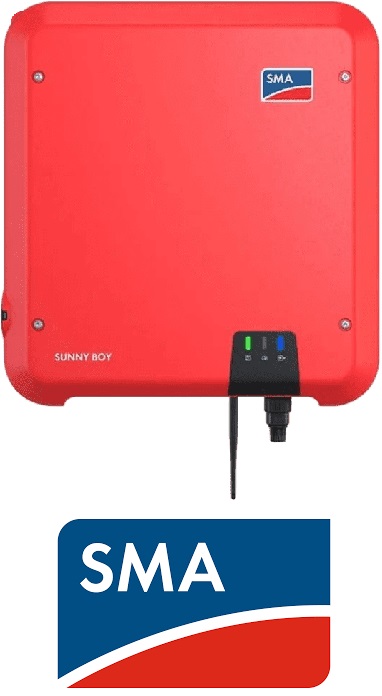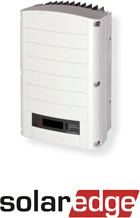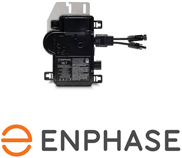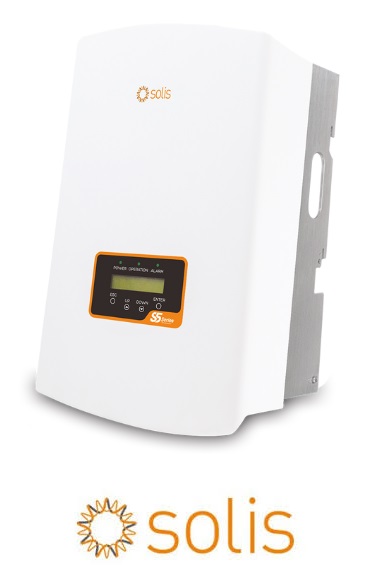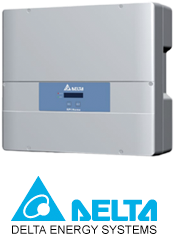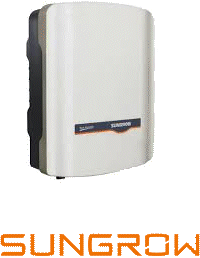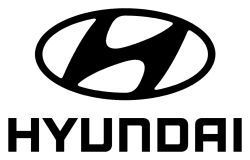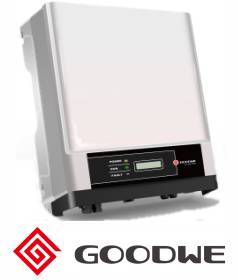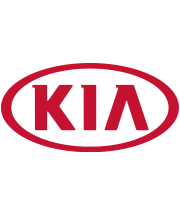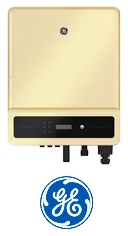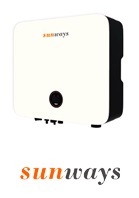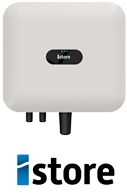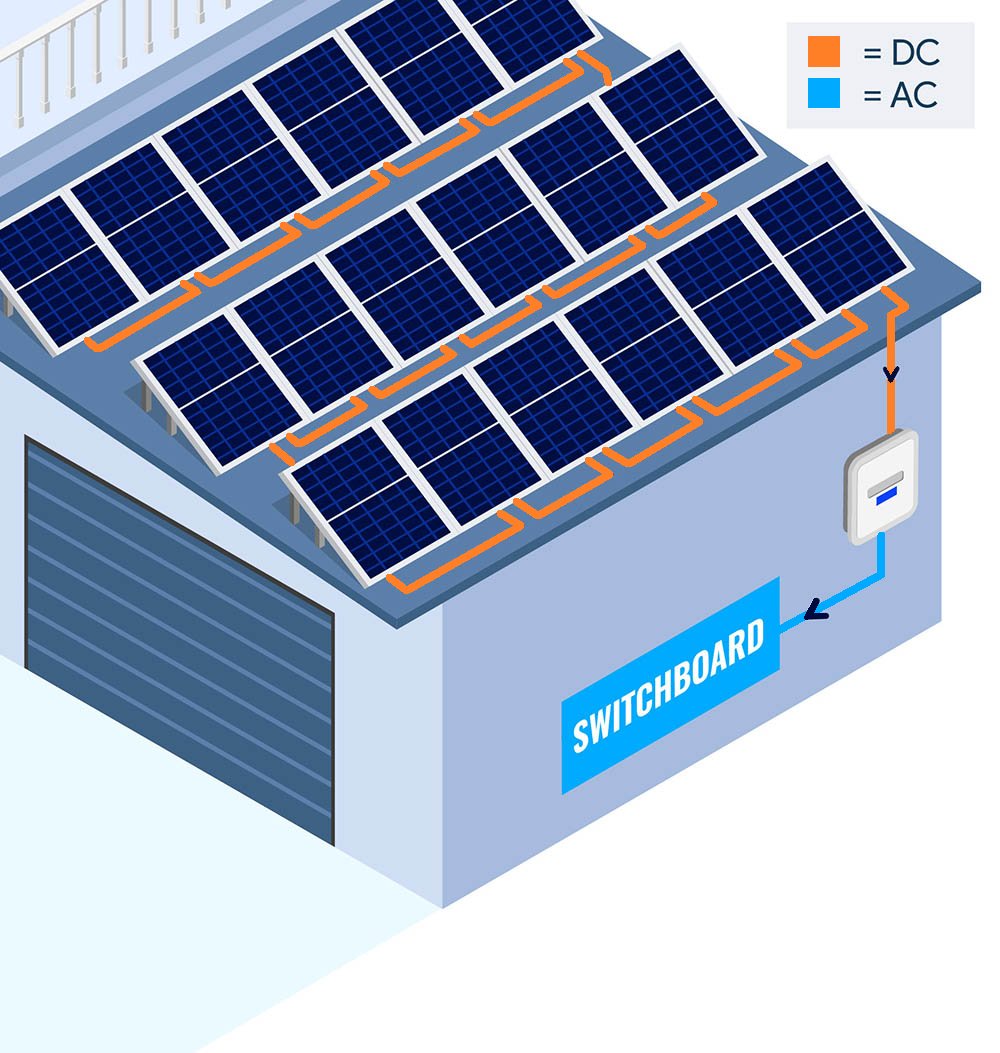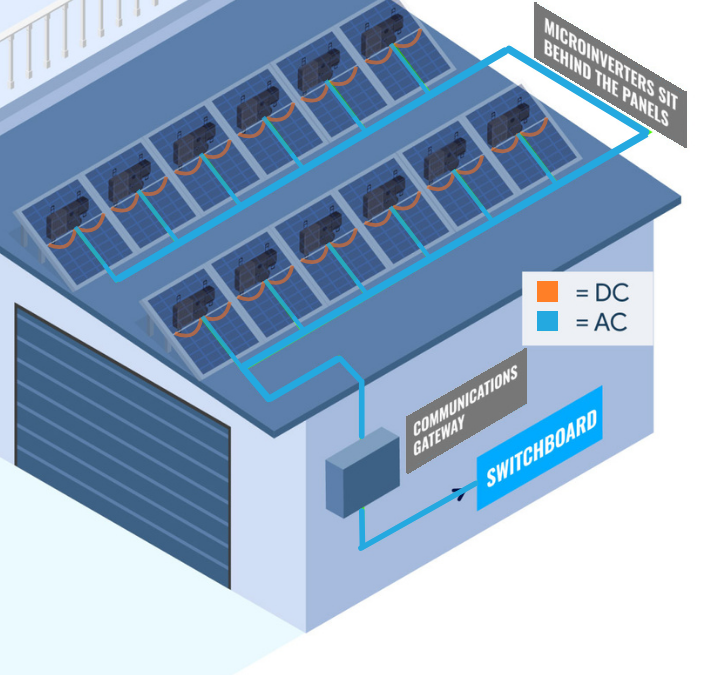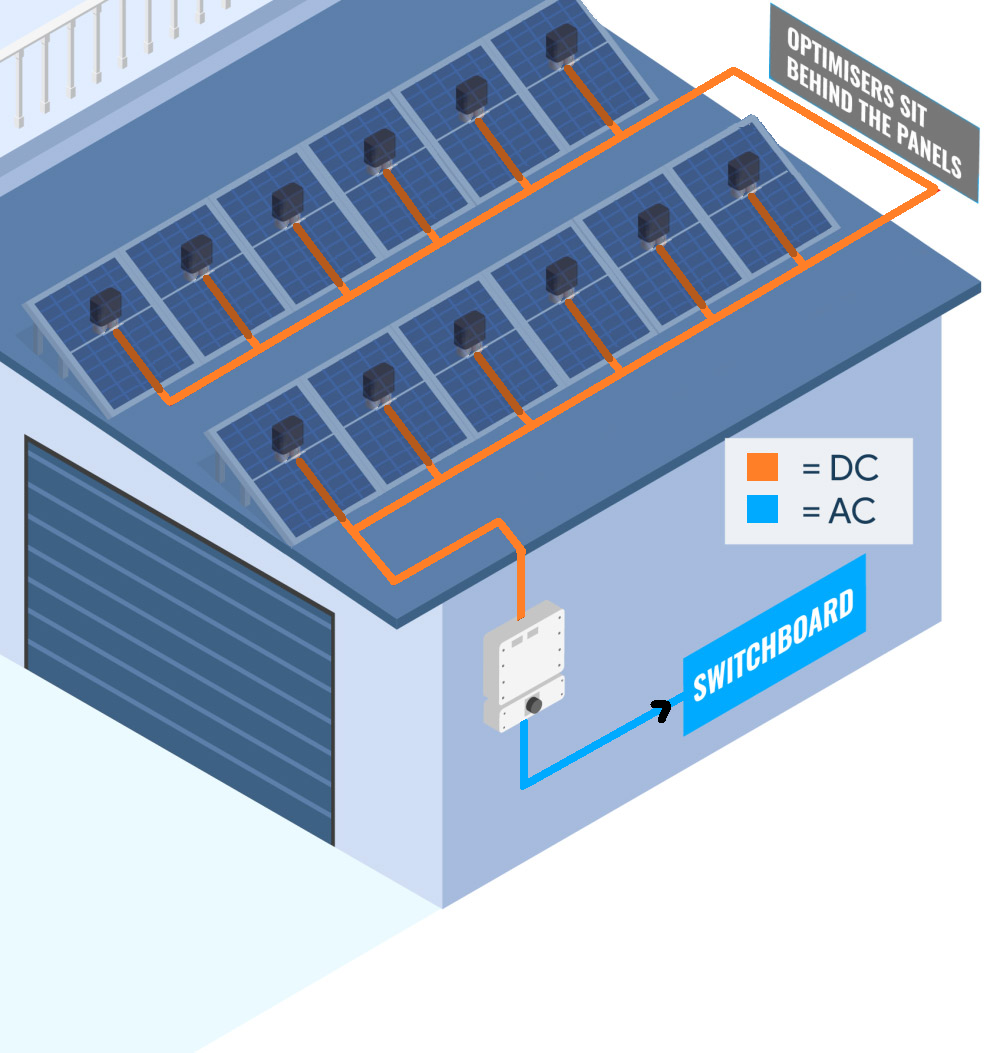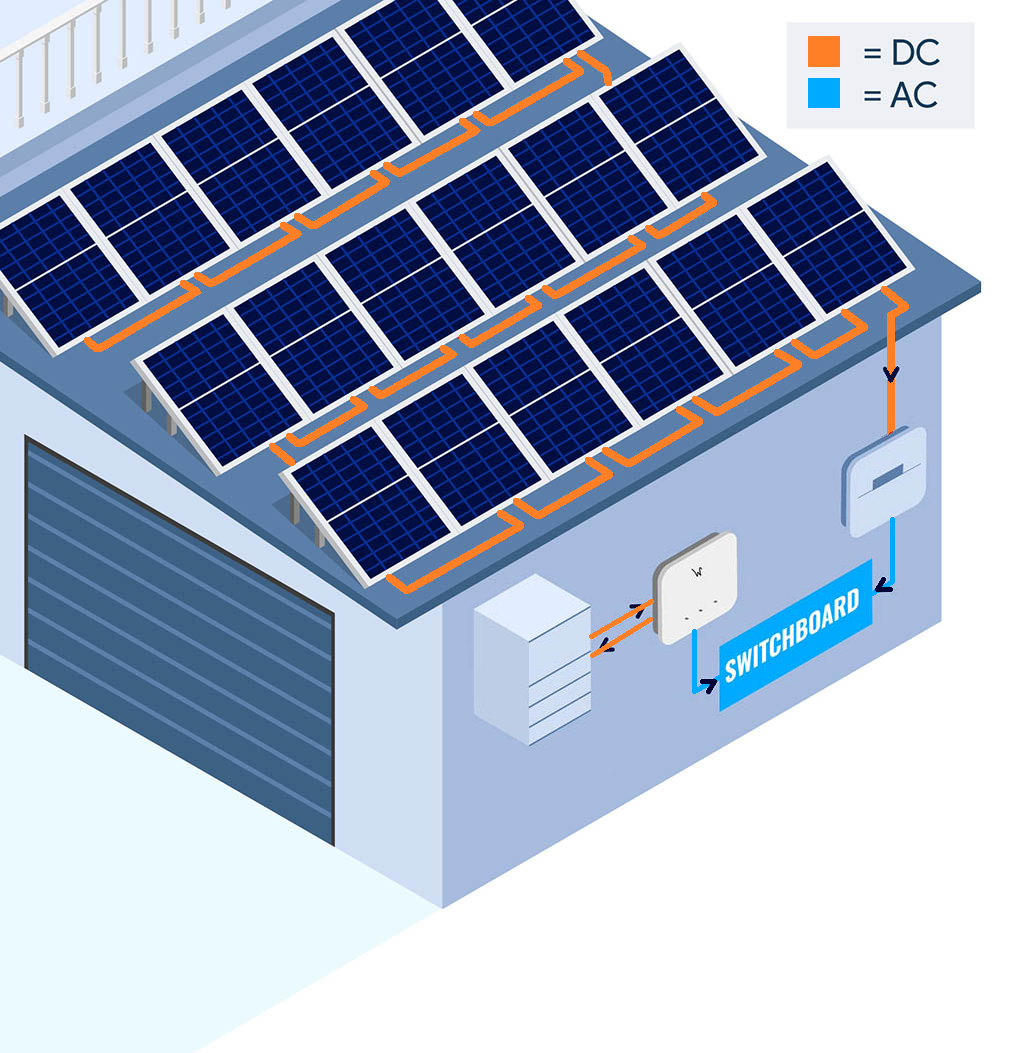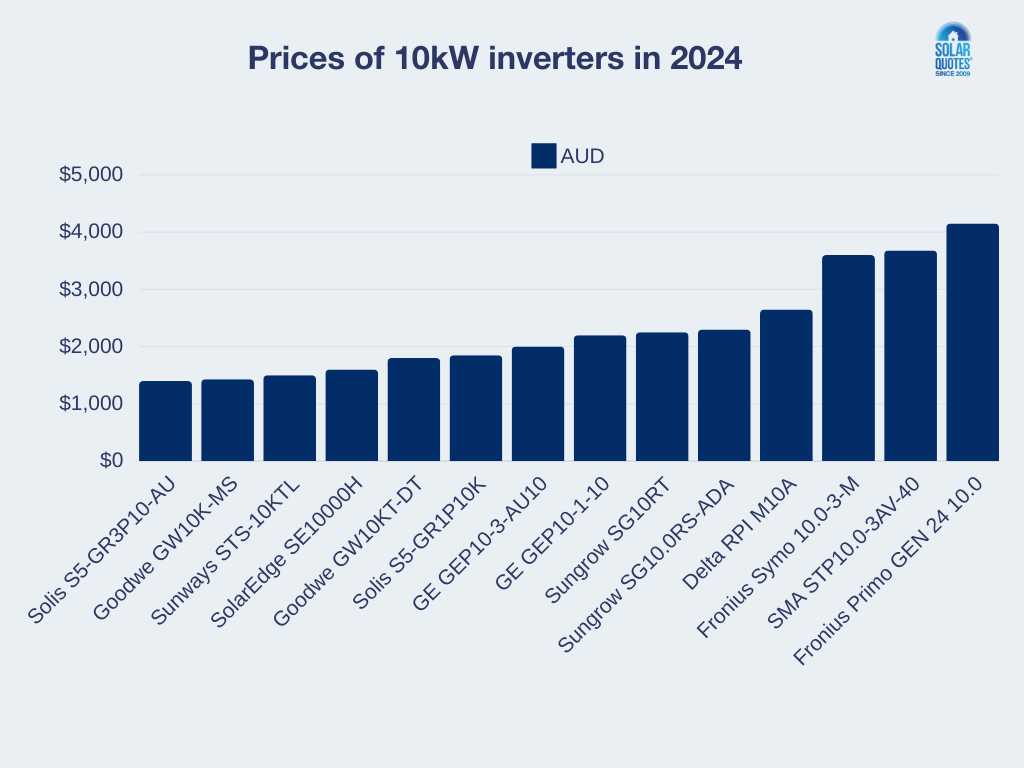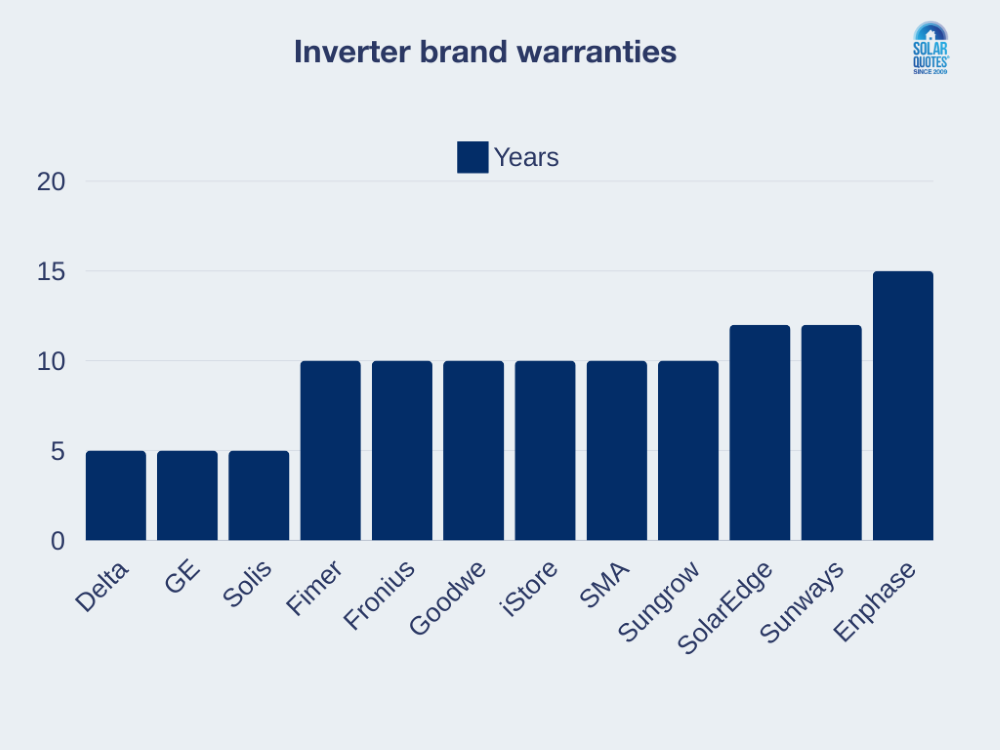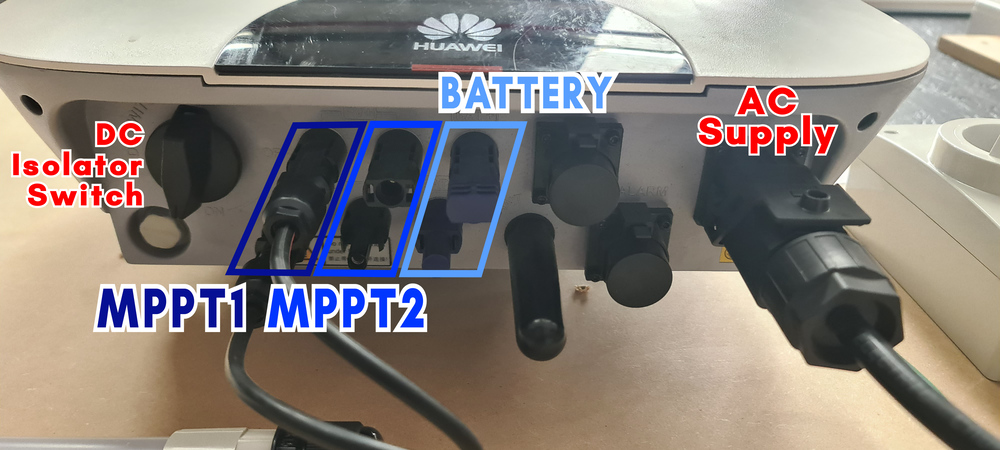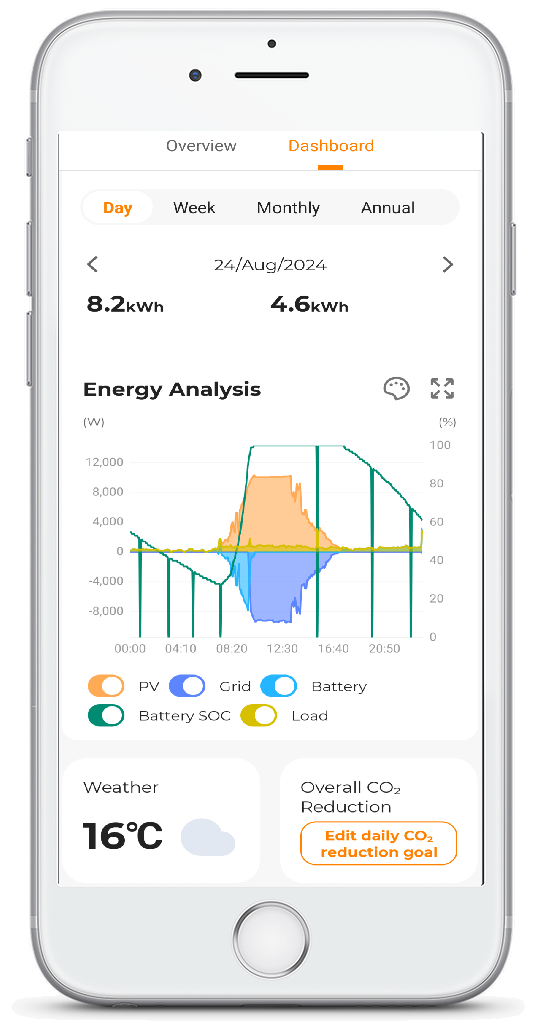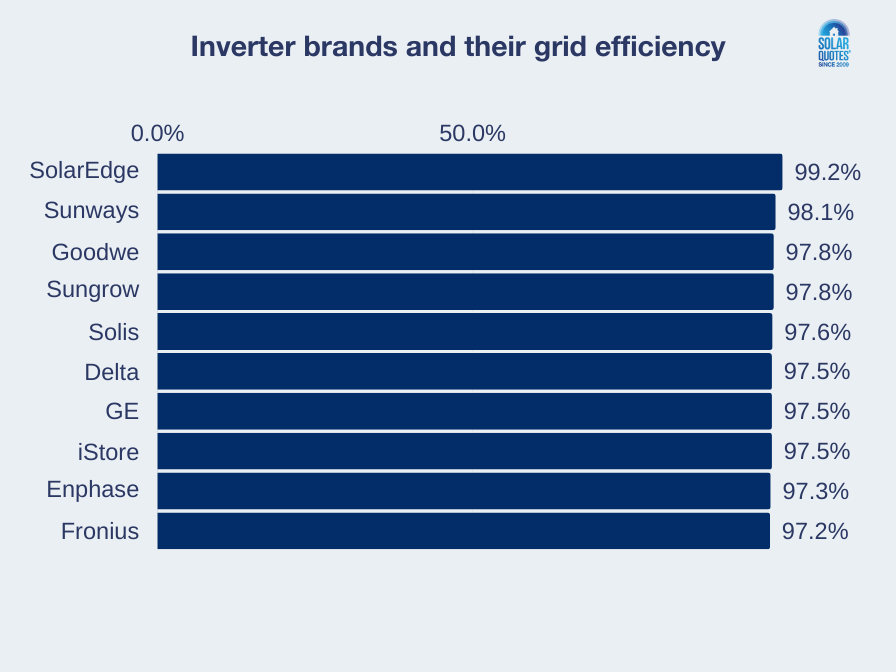Solar Inverters Explained
Last Updated: 24th Mar 2025 By Finn Peacock, Chartered Electrical Engineer, Fact Checked By Ronald Brakels
So, you’ve got quotes for a few different solar power systems and each company says their system has the best inverter – no surprises there. How do you decide which inverter is right for you?
My website is here to help…
- Browse thousands of inverter reviews I’ve collected from Australian homeowners.
- Discover the best inverters in 2025 – according to solar installers I trust
- Check out brands worth considering with my recommended brands chart.
- Compare specs and prices of the decent inverter brands below. (To compare hybrid inverters, click here.)
Solar Inverter Comparison Table
| Product Name |
Delta Home Series (5kW)
|
Enphase IQ8AC
|
Fronius GEN24 Primo
|
GEP 5-10kW (Single phase)
|
Goodwe DNS G3 Series
|
iStore (Single phase, 5-6kW)
|
Sigenergy Energy Controller (single-phase)
|
SMA Sunny Boy (5.0-6.0kW)
|
SolarEdge HD Wave Genesis (5-6kW)
|
Solis S5 Series (Single phase) 5-6kW
|
Sungrow SGRS Series
|
|---|---|---|---|---|---|---|---|---|---|---|---|
| Manufacturer Logo |
 |
 |
 |
 |
 |
 |
 |
 |
 |
 |
 |
| Product Image |
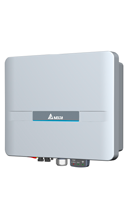 |
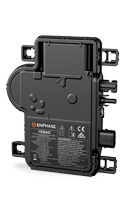 |
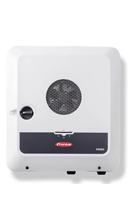 |
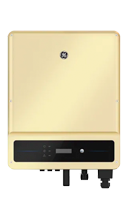 |
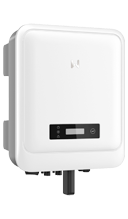 |
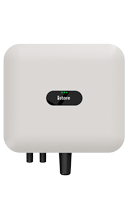 |
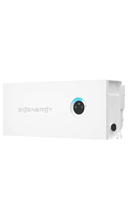 |
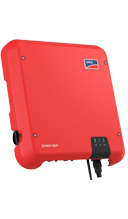 |
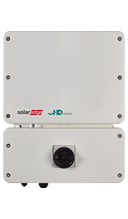 |
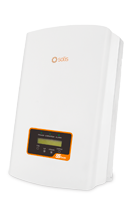 |
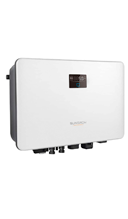 |
| Choose model: | |||||||||||
| Price (Approx. AUD price RRP inc. GST) | $550 | $210 | $2300 | $1,700 | $890 | $1,700 | $1770 | $1600 | $1,300 | $900 | $1700 |
| Nominal AC Power (Inverter size) | 5000 W | 360W | 5000W | 10000 W | 5000 W | 5000W | 5000 W | 5000 W | 5000 W | 5000 W | 4999 W |
| Max efficiency (PV to grid) | 97.5% | 97.3 % | 97.2% | 97.5% | 97.8% | 97.5% | 98.0% | 97.00% | 99.2% | 97.6% | 97.8% |
| # of MPPT’s | 2 | N/A | 2 | 3 | 2 | 2 | 2 | 2 | 2 | 2 | 3 |
| Dimensions | 380 x 318 x 130 mm | 212 mm x 175 mm x 30.2 mm | 530 x 474 x 165 mm | 511 × 415 × 175 mm | 354 * 433 * 147 mm | 365 x 365 x 156 mm | 700 x 300 x 260 mm | 435 mm x 470 mm x 176 mm | 450 x 370 x 174 mm | 310 * 543 * 160 mm | 490 * 340 * 170 mm |
| Weight | 12 kg | 1.1 kg | 16.6 kg | 22.5 kg | 13 kg | 12 kg | 18 kg | 16 kg | 11.4 kg | 12 kg | 19 kg |
| Single phase or three phase? | Single phase | N/A | Single phase | Single phase | Single phase | Single phase | Single phase | Single phase | Single phase | Single phase | Single phase |
| IP Rating | IP 65 | IP 67 | IP 65 | IP 65 | IP65 | IP 65 | IP 66 | IP65 | IP 65 | IP 65 | IP 65 |
| Ambient temperature range | -25°C ~ 60°C | -40ºC to +65ºC | '-40°C - +55°C | -25 ~ +60°C | -25 ~ +60 deg C | -25°C to 60°C | -30 - +60°C | −40 °C to +60 °C | -40ºC to +65ºC | -25 ~ +60°C | -25 ℃ to 60 ℃ |
| Standby consumption | <2W | <1W | < 10 W | <1 W | <1W | < 2.5W | <5W | <5W | <5W | <1 W | < 3 W |
| Network connection | Wi-Fi | Power Line Communication (PLC) | Fronius Solar.web, Modbus TCP SunSpec, Fronius Solar API (JSON) | Wi-Fi / RS485 / LAN | RS485, WiFi, LAN | RS485; WLAN/Ethernet via Smart Dongle-WLAN-FE; 4G / 3G / 2G via Smart Dongle-4G (Optional) | WLAN / Fast Ethernet / RS485 / Sigen CommMod (4G/3G/2G) | WLAN, Speedwire / Webconnect | RS485, Ethernet, Wi-Fi | RS485, Optional: Wi-Fi, GPRS | WLAN, Ethernet, RS485, DI, DO |
| Warranty | 10 years (for units sold after Sep 2 2024), otherwise 5 years | 25 years | 5 + 5 years | 5 years | 10 years | 10 years (+2 years parts warranty for units installed up to July 2025) | 10 years | 5 + 5 years | 12 years | 10 years | 10 years |
| Screen? | No | No | No | Yes | Yes | No | No | No | No | Yes | Yes |
| Built in DC isolator? | Yes | N/A | Yes | TBD | Yes | Yes | Yes | Yes | Yes | Yes | Yes |
| Cooling (passive/fan) | Passive | Passive | Fan | Passive | Passive | Passive | Passive | Passive | Passive | Passive | Passive |
| Noise (db) | 20 db(a) | TBD | TBD | TBD | <25 db | < 25 db | TBD | 25 dB | <25 dba | TBD | TBD |
| Datasheet Supplied? | Yes | Yes | Yes | Yes | Yes | Yes | Yes | Yes | Yes | Yes | Yes |
| Warranty Supplied? | Yes | Yes | Yes | Yes | Yes | Yes | Yes | Yes | Yes | Yes | Yes |
| Modern slavery statement or forced labour policies? | TBD | Yes, here. | |||||||||
| More information on brand | Here | Here | Here | Here | Here | Here | Here | Here | Here | Here | Here |
Note: The prices displayed above are our best estimate of retail pricing, including GST.
Table of Contents
- Budget vs. premium solar inverters
- What is a solar inverter, and what does it do?
- Inverter brands for dummies
- Types of inverters
- What to look for in a good inverter
- How to spot a bad one
- The best solar inverters in 2025
Budget vs. Premium Solar Inverters
When buying solar, your installer will likely give you the choice of a ‘budget’ or ‘premium’ solar inverter. Is it worth paying more for premium?
A premium inverter may:
- have a longer warranty
- have better support
- have a better monitoring app
- handle shade better
- allow more flexible solar array design
- and last longer
…than a cheaper inverter, and command a price premium:
| Inverter size & phases | approx. extra $ for premium (Fronius, SMA, SolarEdge) |
|---|---|
| 5kW Single-Phase | $1,000 |
| 5kW 3-Phase | $1,200 |
| 10kW Single-Phase | $2,000 |
| 10kW 3-Phase | $2,200 |
| 15kW Single-Phase | / |
| 15kW 3-Phase | $3000 |
Only you can decide if the extra money is worth it. Ask the quoting installer what benefits your extra money gives you over a good budget option. Personally, I always look for mid-range (e.g., Sungrow, iStore) or premium (e.g., Enphase, SolarEdge, Fronius) inverters. I know they are less likely to give me grief over the years.
What Is A Solar Inverter – What Does It Do?
All grid-connected PV systems require a solar inverter1. It’s a box of power electronics with more functions than you might think.
A fully featured, modern inverter should:
- take the high-voltage DC power output from your solar panels (up to 1,000V DC)
- convert it to 230V AC for home appliances
- find the optimum voltage and current to push into your solar array every few seconds using one or more Maximum Power Point Trackers
- export surplus solar to the grid – whilst respecting any local export limits
- allow flexible exports depending on your location
- allow a remote ‘emergency shutdown‘ signal to stop exports when the grid is under stress
- if you don’t have a battery, shut down immediately if it senses a grid outage (technical term: Anti-Islanding Protection.)
- provide monitoring via an app that – at a minimum – shows you how much solar it generated and compare that to your home energy consumption
- alert you to faults with alarms, whether that’s a flashing light, an annoying beep, an email or app notification
- provide a software interface to help other appliances, such as EV chargers, know how much solar is available
So it’s pretty important to get a decent one.
Inverter Brands For Dummies
But I’m guessing you don’t know one brand of solar inverter from another – you certainly aren’t alone. The simplest, quickest way I can think of to describe how each brand stacks up is to compare them to cars – because I’m also guessing most of you will know the difference between a Mercedes, a Ford and a Hyundai.
If Solar Inverters Were Cars…
-
- Top quality
- European made
- Expensive
- Lots of features
- Great Performance
- Fronius reviews
-
- Good quality
- German made
- Expensive
- Look great
- Increasingly rare
- SMA reviews
-
- High quality
- Innovative
- Upper mid-range
- Lots to play with
- Great Hybrid models
- SolarEdge reviews
-
- Top Quality
- Innovative
- Teeny Tiny
- You either love ‘em
or hate ‘em - Enphase reviews
-
- Cheap but pretty good
- Excellent Australian support
- Long history
- Massive parent company
- Solis reviews
-
- Built like a tank
- Looks like a tank
- Safe choice
- European Heritage
- Long history
- Delta reviews
-
- Cheap
- Reliable
- Well Supported
- Great with batteries
- Sungrow reviews
-
- Cheap
- But quite good
- Made in Asia
- Have improved recently
- Goodwe reviews
-
- Rebadged Chinese Units
- Made in Goodwe factory
- Weird colours
- Good value
- GE reviews
-
- German brand
- Made in China
- Boring but reliable
- Sunways reviews
-
- New brand for Australia
- Looks impressive
- Complete eco-system
- Still to prove themselves
- iStore reviews
Types Of Solar Inverters
There are six main classifications:
a) String Inverters
All the solar panel inverters shown above (apart from Enphase) are string inverters. They’re the most common type available and are called string inverters because panels are wired together in series strings. These units are usually installed on the wall, ideally close to your meter box.
b) Central Inverters
You won’t find these in home installations. Only large commercial installations or utility-scale solar farms use these monsters – usually housed in big industrial cabinets.
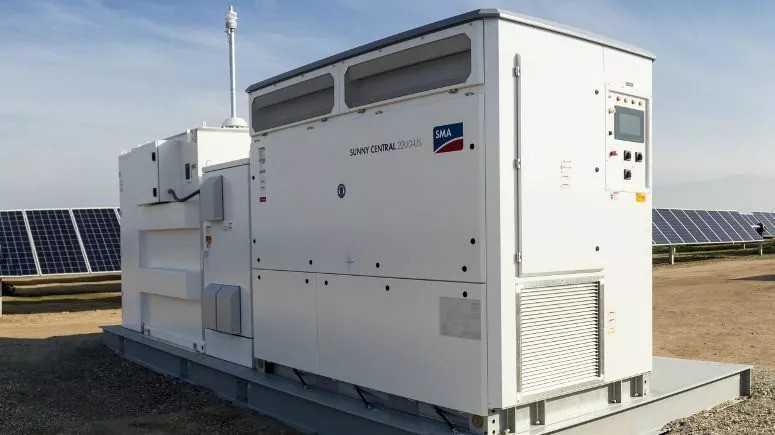
Image credit: SMA America
c) Microinverters
Microinverters are tiny solar inverters about the size of a paperback book. You generally need one micro-inverter per solar panel, although some models can handle the output from two, four, or even more modules. You can read about the advantages of microinverters here. The main benefits are they operate at a safer, lower voltage and have design flexibility for complex roofs.
Microinverters can also be helpful if you have partial shade conditions. However, good string inverters are catching up with shade tolerance through increasingly advanced MPPT algorithms.
In my opinion, the only microinverter brand worth considering is Enphase. I’ve got 35 of them on my straw house.
d) Optimised String Inverters
These provide similar performance benefits to microinverters with different technology. An optimiser system requires a string inverter with optimisers on each solar panel. These devices work to maximise each panel’s output under a variety of conditions.
SolarEdge optimisers require you to optimise every panel in an array and use a SolarEdge inverter.
Formerly known as Huawei, the locally supported iStore systems are more flexible than SolarEdge because they can deploy optimisers selectively, and iStore MPPT inverters work across a broader voltage range instead of just a simple target voltage.
Tigo optimisers are inverter agnostic, which can keep costs down because you can also deploy them selectively if the shade only affects a couple of panels. However, there is an extra cost to add Tigo monitoring hardware, an option that gives you panel level data, which is particularly handy to know if the panel or the Tigo itself has failed.
e) Hybrid Inverters
Also known as multi-mode, a hybrid inverter lets you add batteries to your solar power system without a separate battery inverter. A hybrid combines the functions of battery and solar management. In most cases the solar input interfaces with the battery using a technique called “DC coupling”.
Electronics coordinate the battery charging with direct current, straight from the solar array, so there are fewer conversion losses and more capacity to charge the battery and simultaneously run AC loads in the house.
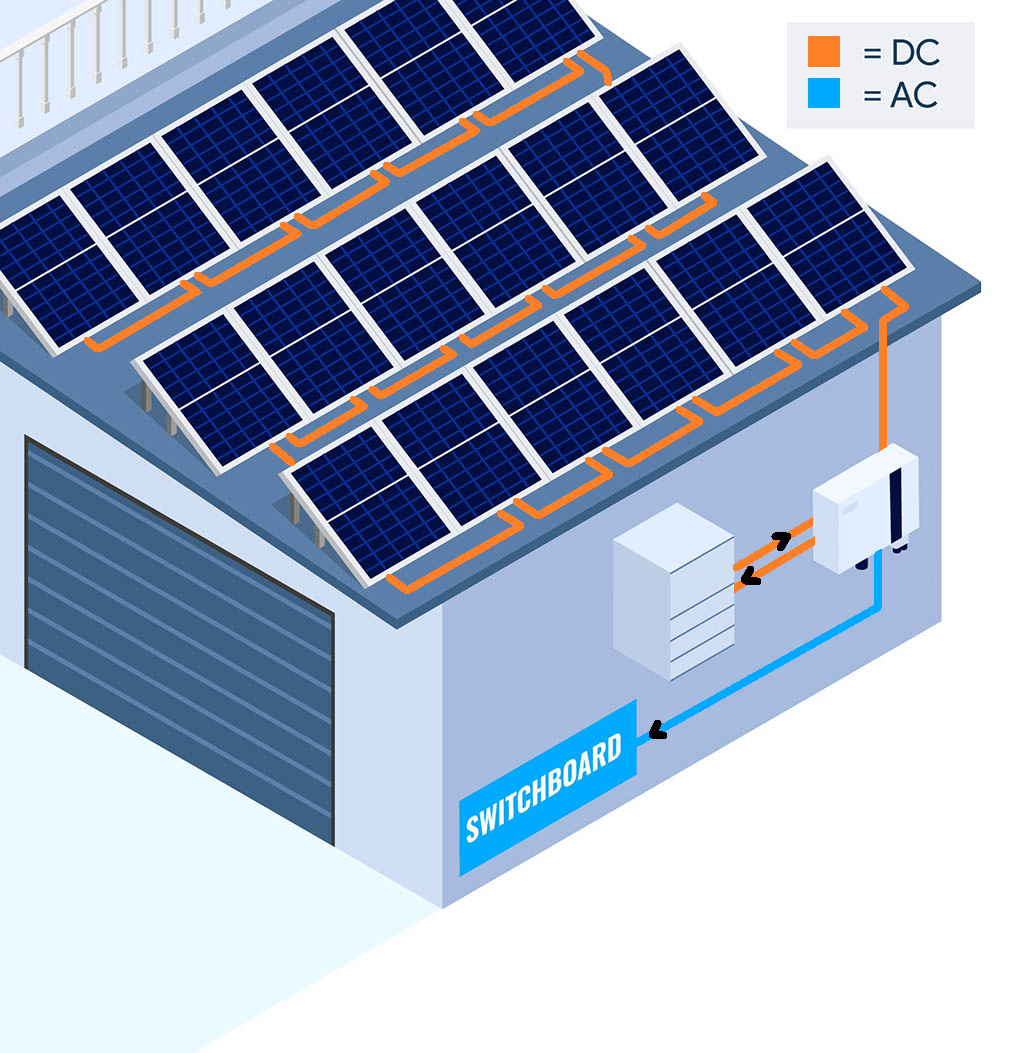
f) Modular Hybrid Inverters
Sigenergy has pioneered a new style of inverter installation, as a part of their “five-in-one” SigenStor battery system. The top module of the system is essentially a hybrid inverter of up to 25 kW (if you get the 3-phase version). You can buy the inverter module first and easily add battery modules or the bi-directional DC EV charger module underneath later. They all simply stack together.
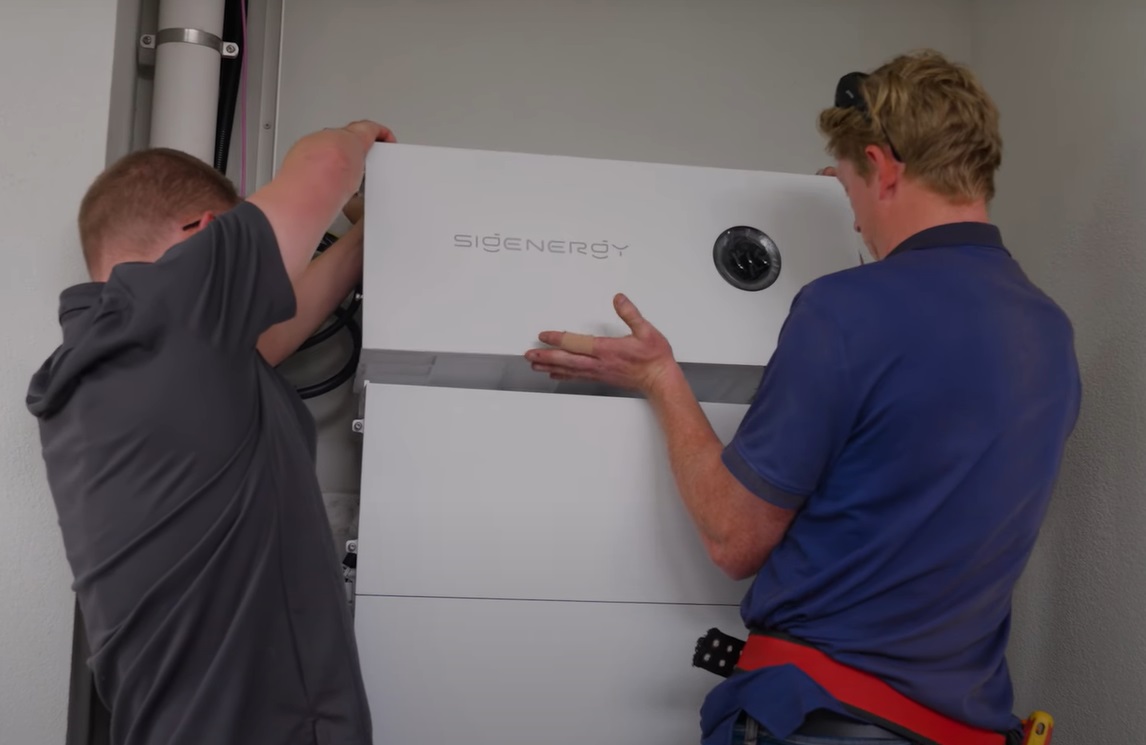
The hybrid inverter module simply stacks on top of Sigenergy’s battery modules.
This modular design is more straightforward to install because it eliminates DC battery wiring, saving money on installation costs. Adding more batteries is also simple enough, they stack just like Fronius/BYD or Sungrow.
However, the remote AC switchboard which offers much greater flexibility and backup features, is much like other brands and models.
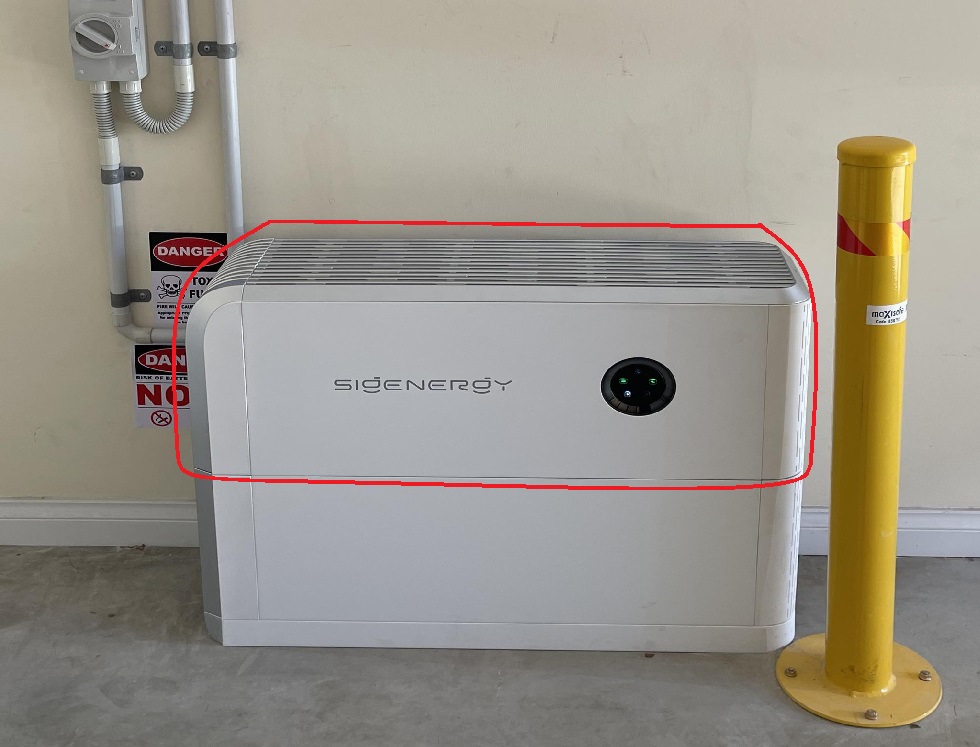
This SigenStor battery system has its modular hybrid inverter on top of a battery module. The modular design makes adding battery storage a breeze. Install Credit: Solaworx
g) Battery Inverters
Often referred to as AC coupled batteries, these units can be more brand agnostic, so they’re often used to retrofit a battery to your existing solar power system.
They offer more flexibility because your battery system can be separate from your solar panels, or even on a separate building or compliant location. (i.e. not connected straight to the same inverter).
The battery inverter simply monitors export or import from the grid in real-time and then charges or discharges as needed, to reduce or eliminate grid power use.
What To Look For In A Good Solar Inverter
1) Can it be used in Australia and is it Clean Energy Council approved?
When choosing a solar inverter, the first thing to look for is whether it complies with the relevant Australian Standard (AS4777). You can quickly check this by checking out the Clean Energy Council’s approved products list.
All grid-connected solar inverters certified for Australia should be on this list. If one you’re considering isn’t, don’t buy it, as your Distributed Network Service Provider (DNSP) likely won’t permit you to install it.
Another reason to buy CEC-approved inverters as part of your full system is to be eligible for Australia’s solar rebate, which can knock thousands off the up-front cost of a system. Note that the device must be on the Clean Energy Council-approved list at the time of installation to be eligible for the subsidy.
It’s also worth looking at the company behind the product—how long has it been around? Do they have an Australian office? What is their track record in Australia with warranty claims? Again, this is where our reviews section can help.
2) Inverter price – how much do good ones cost in 2025?
You can check out the price of different solar inverters available in Australia here. The inverter can represent around 20% of the cost of a solar power system.
For example, decent-quality 5kW solar inverters, which can support up to 6.6kW of panels, start at $1,000 for budget single-phase models (e.g., Sungrow, Goodwe, or Solis) and up to $2,000 for premium single-phase models (e.g., Fronius or SMA).
If you want a 3-phase, 5kW inverter; add around $400 to those prices.
However, when considering 10kW inverters, an older 3-phase version is sometimes a bit cheaper than the newer single phase version:
Tip: While the price is steeper, if you have a 3-phase power supply at your house, I recommend getting a 3-phase inverter.
Whatever you do, never buy the cheapest solar inverter on the market! Trust me on this—really cheap products have no chance of lasting 15+ years in Australia. It is difficult and expensive to design and manufacture a good solar inverter that will endure, particularly in Australia’s often harsh conditions.
3) What is the best solar inverter size (capacity) to buy?
There’s often confusion about inverter capacity, but generally, it should be less than solar panel capacity.
Your inverter needs to handle the maximum power your system can generate. For example, a 5kW solar system needs 5kW of panels and a 5kW inverter. Simple, right? Actually, it can get more complex.
According to Australian guidelines, the size of your solar panel array (in kW) can be up to one-third larger than the inverter capacity. This practice is called “oversizing” and is common and recommended.
Tip: If you buy a battery with your solar, you can exceed this limit. A good installer will explain how to do this.
Generally, it’s best to install as many panels as you can afford and fit on your roof. Buy a good-quality inverter to suit, staying within any limits set by your local electricity network.
4) What are your installation location options?
Inverters are generally installed as near as practicable to your electricity meter and should always be situated in the shade for best performance. Note that a shaded installation location can also be a warranty requirement. If you don’t have a suitable shady spot, then you should have a simple shade cover made or purchased for it. There are model-specific covers available, or a cheaper option is a small awning available from hardware stores.
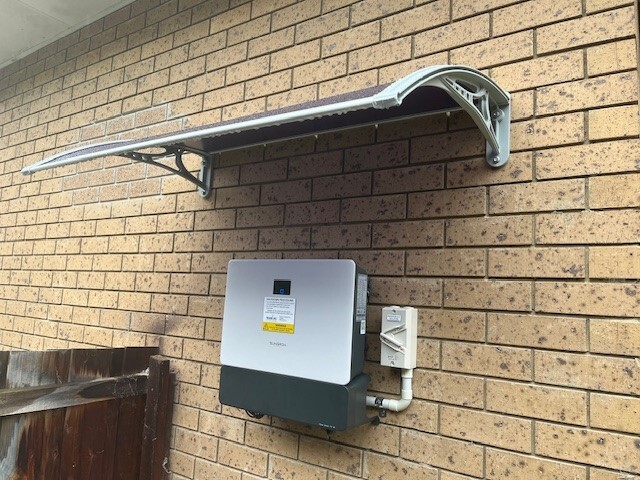
Image credit: Teaslec
5) Is it weather-proof?
Most grid-connected inverters are weather-proof (generally IP65 rated) so they can be located in areas with exposure to the elements.
Your solar inverter is a box of sensitive electronics. The better you protect it from heat and weather, the better it will perform and last.
Check these aspects on specification/warranty documentation, or ask your retailer where to install your solar inverter and how they intend to protect it if necessary.
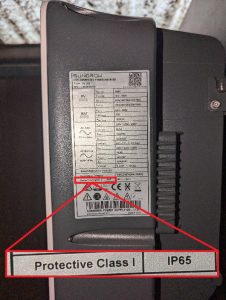
Check the spec label on your inverter for its IP rating to find out how weatherproof it is.
6) How long will the inverter last, and what’s the warranty?
Typically, grid-connected inverters last from 10 to 20 years and you should expect most good-quality units to have a lifespan of 10 years minimum.
Solar inverters have warranties ranging from 5 to 15 years. An increasing number of manufacturers offer service warranty extensions to those willing to pay for them. Obviously, the longer the warranty, the more protection you have.
Some manufacturers (such as Fronius and SMA) offer a “5 + 5” year warranty – where parts and labour are covered under warranty for the first 5 years, but only parts are covered for years 6-10. If yours conks out in year 7, you’ll need to pay around $300 in labour costs to replace it.
Check out the unit’s warranty and balance this against other features of your system to help you make an informed decision on which solar inverter is best for you. Scrutinise the warranty carefully for any unreasonable conditions and determine where repairs will occur. If it has to be shipped overseas for repairs, you could wait for a long time for a fix or replacement.
Remember: while Australian Consumer Law can trump what a manufacturer states in a warranty, you don’t want to have the stress and unpleasantness of a drawn-out claim if something goes wrong.
7) Is the inverter expandable?
If you’re considering expanding your solar system down the track, it’s a good idea to plan ahead. While adding more panels later is definitely possible, it requires some forethought.
Most solar inverters in Australia come with two or more MPPTs (Maximum Power Point Trackers). These MPPTs allow your system to manage different sets of solar panels. If you want to expand later, it’s crucial to leave one or more MPPTs free during the initial installation. This way, you can easily connect more panels down the line, even if they’re different from your original ones.
However, solar technology moves fast. The panels available now may not be compatible with your system in a few years, due to rapid advancements. Both inverters and panels are subject to approvals, and if a product falls off the approved list, you might not be able to claim government rebates like STCs (Small-scale Technology Certificates).
If flexibility is your priority, you might want to consider microinverters like Enphase. These manage each panel individually, making it simpler to add on later. But even with microinverters, you could still face challenges, such as changing approval rules from your energy network.
8) What about the display and remote monitoring?
Most solar inverters have display lights indicating whether the unit is on, off, or on standby.
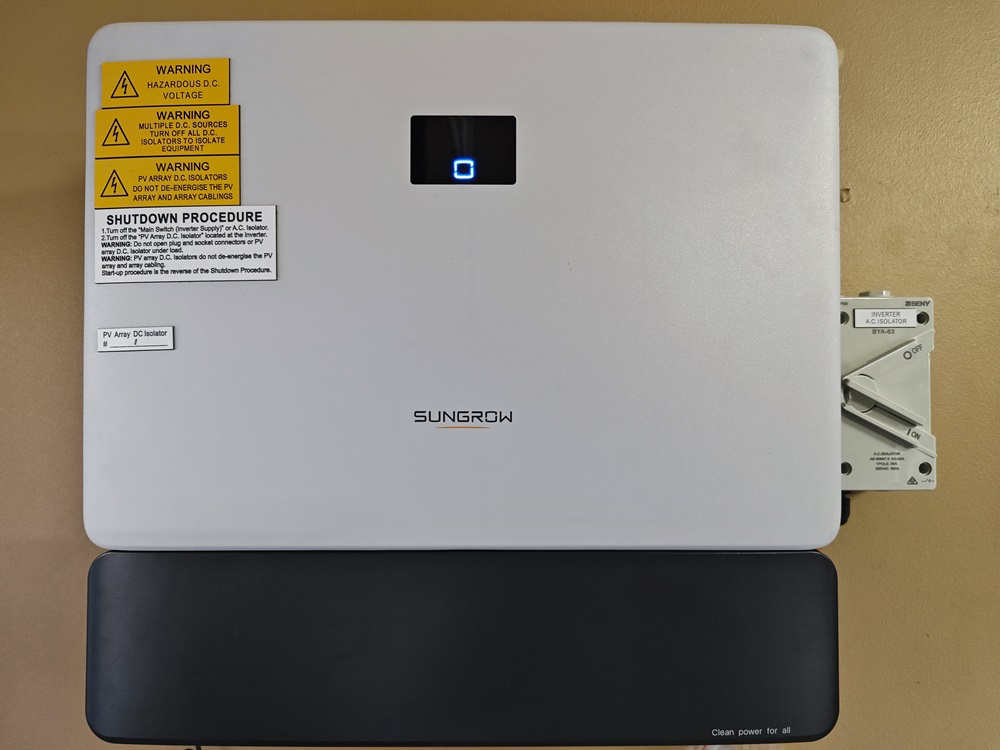
A Sungrow inverter with a blue light, indicating that it is on stand-by. Image credit: Solar Saving
They can also have digital displays that indicate some or all of the following information:
- the amount of energy (kilowatt hours) generated that day,
- the amount of electricity (kilowatt hours) produced since the unit was installed,
- the amount of power (kilowatts) the system is currently generating,
- the number of hours the unit has been producing power,
- error codes
Nearly all inverters also offer an app that allows you to view detailed performance information and alerts more easily on your PC or phone.
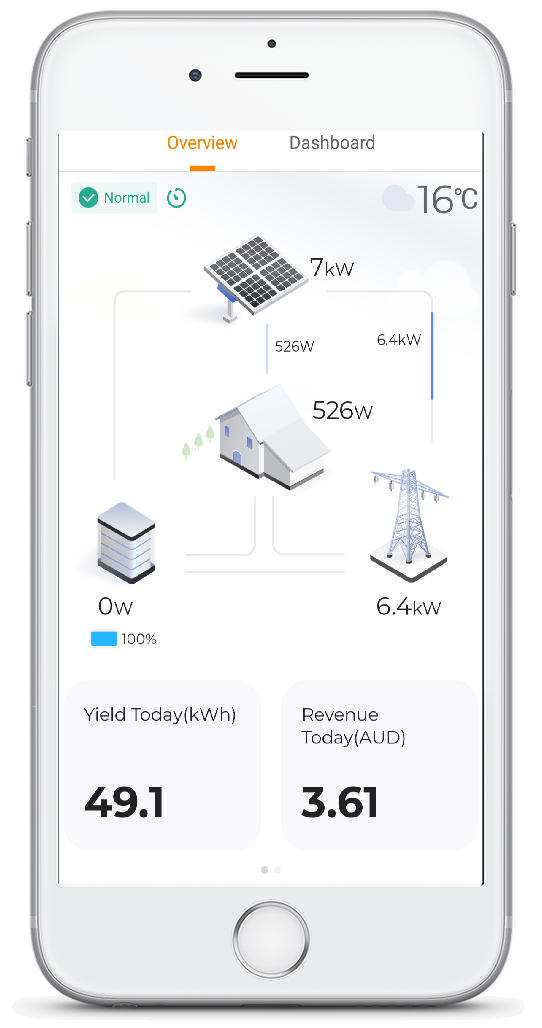
9) How efficient is a grid-connected inverter?
Inverter efficiency measures how well a device converts the electricity it receives from the solar panels into power that can be used by your home or exported to the grid. Older grid-connected transformer-based solar inverters have an efficiency of around 93% or better, while the transformer-less devices sold today are typically around 96% or better.
Higher efficiency is generally better, but some inverters—such as Fronius—have active cooling. This can increase the unit’s lifespan but give them a slightly lower efficiency rating than inverters without it. So, higher efficiency isn’t always necessarily superior.
An inverter’s standby power consumption, for example, during the night or in other very low lighting conditions, also impacts overall output, but this draw is tiny – usually in the range of 1 to 5 Watts, although 5 Watts would be considered high.
How To Spot A Bad Solar Inverter
Most solar inverters supplied by reputable retailers in Australia are OK, with the emphasis on “most.” However, some horrible devices still being installed today have somehow managed to pass Australian compliance testing. These will likely cause their owners some heartache and hip pocket pain down the track, so make sure you’re not one of them.
Note: walk away if there is no written warranty offered on the solar inverter or no specification sheet is supplied. And make sure the organisation issuing the warranty has an Australian office – you don’t want to be calling Shanghai if you have warranty-related issues!
And bear in mind that even the best solar components can be negatively impacted by poor installation, so choosing a good accredited installer is as important as choosing the right device.
Best Solar Inverters In 2025
The following chart shows solar inverter brands I recommend in 2025; the best for Australian conditions ranging from top “budget” models on the left, to top-of-the-line premium brands on the right. See the criteria I base these recommendations on.

According to 161 Aussie installers, the best solar inverter in 2025 is Fronius, followed by Sungrow, and Goodwe.
If you want to be sure of getting a good inverter as part of a system purchase, get a quote from installers I trust here:
- Or multiple microinverters ↩
